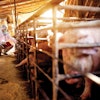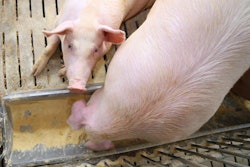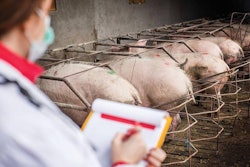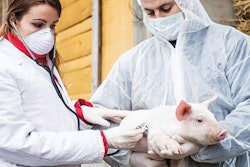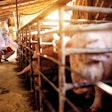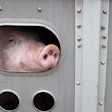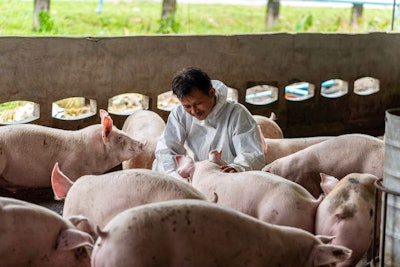
Further outbreaks of classical swine fever among Japan’s domestic pigs bring the country’s total outbreaks over the past three years to 76.
In the past week, classical swine fever (CSF) has been detected at another farm in Japan. This brings the country’s total outbreaks to 76, with 273,000 domestic pigs directly affected.
According to the latest official report from Japan’s veterinary authority to the World Organisation for Animal Health (OIE), the most recent farm to be hit by the disease was in Marumori. This town is located in Miyagi prefecture, which is in the Tohoku region in the north of Honshu island.
On December 24, nine of the around 7,000 pigs at the farm were observed with respiratory symptoms, fever and diarrhea. Presence of the CSF virus was confirmed. All the pigs at the premises were culled, along with 900 more at another premises. There, sows had recently been artificially inseminated with semen from the infected farm.
According to the OIE report, the CSF virus detected was a wild strain responsible for outbreaks at 26 epidemiologically linked farms in 11 prefectures, including Miyagi.
In late November and early December, the Japanese agency had notified the OIE about previous cases.
The earlier outbreak was at a farm in Gunma prefecture in central Honshu. There, around 40 of the 2,400 pigs died.
Another farm in Miyagi prefecture was the location of the more recent outbreak. With the infection confirmed on December 11, cyanosis was the noted symptom in one of the 11,900 animals at the premises. As well as those at this farm, around 2,200 pigs were also culled at an epidemiologically linked premises elsewhere in Miyagi.
Update on cases in Japan’s wild boar population
Since CSF was first detected in Japan in September 2018, it has been detected in almost 4,200 wild boar, as well as among domestic pigs.
Most recently reported to the OIE were 151 confirmed cases from 15 prefectures over the period October 28 to December 1.
CSF situation in Brazil
Over the past two months, official reports on the CSF situation in Brazil have stated there had been no new outbreaks.
Between the first cases in September 2020 and mid-June 2021, 11 outbreaks were confirmed with the OIE. These involved almost 200 pigs in total. All the affected premises were described as “extensive backyards farms” in the northeastern state of Piauí.
Neighboring Piauí is the state of Ceará. Here, a further four mortalities from CSF were recorded in October. Of the 17 animals belonging to another extensive backyard pig herd, 12 died. Furthermore, five were culled to prevent further spread of the infection. Around the same time, a further 86 pigs in the same village were also culled.
Both of these states lie outside the country’s CSF-free zone, according to the Brazilian authorities. They report that pig movements are restricted from these two affected areas to other parts of the country.
Latest update from the OIE (as of May 2021) shows a large part of southern Brazil recognized as free of CSF. The rest of the country — broadly the northern states — are designated as having no official CSF status.
More about CSF
Also known as hog cholera, CSF is a contagious viral disease of domestic and wild swine, according to the OIE. Caused by a Pestivirus, there is just one virus serotype. It infects only members of the pig family, and it does not affect humans. CSF presents in acute and chronic forms, and symptoms range from mild to high mortality. A notifiable disease, it is easily transmitted by direct or indirect contact with infected pigs or pig products.
CSF is found in parts of Central and South America, Europe, Asia and parts of Africa. In several European countries, there were large outbreaks during the 1900s. Regions free of the disease are North America, Australia and New Zealand.
In South Asia, an outbreak of CSF in the Kingdom of Bhutan was reported to the OIE as “resolved” two months ago. Previously, the CSF virus had been detected in two carcasses of wild boar found at one location in June 2021.
Causing similar symptoms and mortality in members of the pig family is an unrelated virus, African swine fever.
